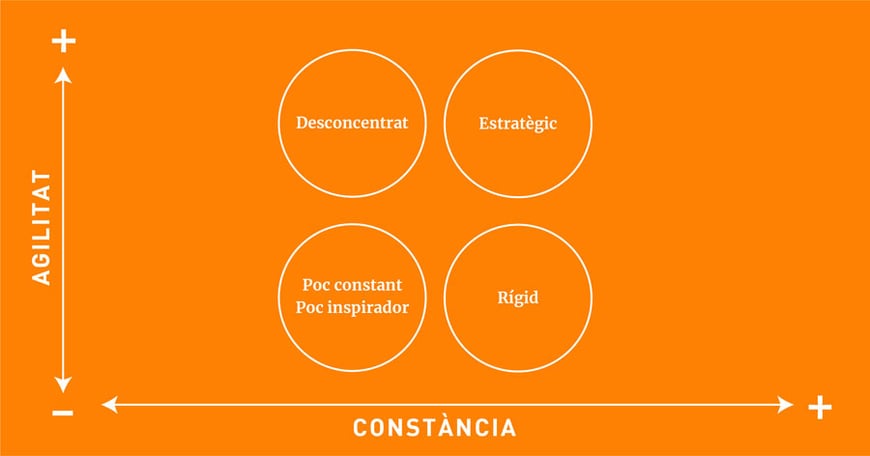The most complete leaders tend to be those who analyse their strengths and weaknesses and allocate resources and time to improve in those areas where they excel the least. They work to balance their competencies and can think strategically.
Strategic leadership
1. What is expected of strategic leaders: Know what skills they are expected to have, whether they are skills that can be combined, and how to be strategic.
2. What are consistent leaders: Find out what they are like, how they tend to act, and what their strengths and weaknesses may be.
3. What agile leaders are: Learn what they are like, how they tend to act, and what their strengths and weaknesses are.
4. The ideal combination: How these two leadership styles can be combined and what makes the mix of these two styles ideal.
5. How to become a strategic leader: Identify what consistent leaders need to do, what agile leaders need to do and which people to surround themselves with.

1. What is expected of strategic leaders?
One of the most demanded characteristics of today's leaders is the ability to be strategic, to be able to execute tasks to make their business work and at the same time to be attentive to discover new trends in the market and adapt to them. To achieve this, you have to be able to strike a balance between two very characteristic traits, perseverance in your work and agile thinking.

2. What are consistent leaders?
The most productive people tend to be the most consistent, hard-working, punctual and goal-oriented for themselves and their teams. They plan everything down to the last detail, in order to be able to offer customers the best possible service or product time after time. Everyone knows what to expect from them, and they like their consistency.
The most common weakness of a consistent leader profile is the difficulty to adapt to changing situations, as they will react to these from their usual planning or old habits. In these cases, this can be counterproductive, leading to the execution of unnecessary tasks at a time when they need to react quickly.
3. What are agile leaders?
Of the companies that were in the Fortune 500 in 1995, only 12% were in 2014. This is due to an ever-changing marketplace, which needs to be very attentive to making the necessary decisions to evolve.
The most successful leaders in these situations are able to play any role within the company and pivot when necessary. Agility also requires curiosity, a willingness to learn from each other, and a facility for change.
But just as consistency can become rigidity, agility can become a lack of focus. Agile leaders may be great visionaries, but they will have difficulty executing these visions, as they often embark on new projects before completing those they have started.
4. The ideal combination:
The best solution is the balance between these two elements, constancy and agility, this is when leaders can become strategic. People with high-quality standards, a willingness to achieve goals and a willingness to work consistently. They will also be open to change, be attentive to their environment, and identify when it is the right time to pivot and evolve in the market.
5. How do you become a strategic leader?
Know yourself and identify what type of leader you are - do you excel in chaotic situations, or are you more likely to focus on a single task? Once you are clear on this, look to surround yourself with people who complement you in those areas where you are lacking. For example, an agile leader should find a more consistent partner, who will remind them of what they need to focus on and prevent them from losing focus on tasks. In the case of a constant leader, they should find a partner who is proactive in suggesting new ideas, pushes them out of their comfort zone and helps them react to changing situations.
What kind of leader do you want to be?




